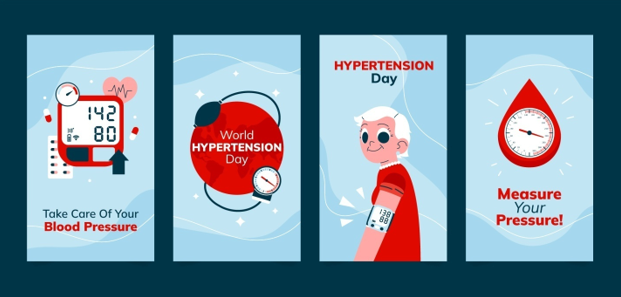That familiar squeeze. The digital numbers blinking into existence after the cuff deflates. We’ve all been there, the blood pressure check. But what’s the real story behind those digits? When does a reading shift from just another data point to something that warrants genuine attention? Figuring out blood pressure – really grasping the difference between a good level and hypertension – can feel like trying to understand a code. But it’s a code our bodies are constantly broadcasting, filled with essential information about our heart and circulatory system.
Generally, when people talk about “normal” blood pressure, the ballpark figure is 120 over 80. That top number, systolic, that’s the push of your heart as it contracts. The bottom one, diastolic, that’s the pressure in your arteries when your heart’s taking a breather between beats. Thing is, these numbers aren’t set in stone. They wiggle around depending on what you’re up to – a run, a stressful meeting, even just the time on the clock. A little jump after some exercise or during a tense moment? Usually not a cause for alarm.
Hypertension a silent killer
Now, Hypertension… that’s a different beast altogether. It’s not a one-off high reading; it’s when your blood pressure stays elevated over time. It’s not a quick blip, but an ongoing situation where the force of your blood pressing against your artery walls is consistently too strong. Often dubbed the “silent killer,” hypertension frequently develops without noticeable symptoms, making regular monitoring absolutely crucial. Ignoring it can lead to serious health complications down the line, including heart disease, stroke, kidney problems, and even vision loss.
So, when should those blood pressure readings prompt a closer look? While a single high reading might be due to a temporary factor, consistently elevated readings over time are a red flag. Healthcare professionals generally diagnose hypertension when systolic readings are consistently 130 mmHg or higher, or diastolic readings are consistently 80 mmHg or higher. However, your doctor will consider your individual health history and other risk factors when making a diagnosis.
The concern isn’t just about the numbers themselves, but what they signify about the health of your vascular system. Think of your arteries as flexible highways that efficiently transport blood throughout your body. Think about it this way: when your blood pressure is constantly running high, it’s like putting constant stress on those blood vessel “highways.” Over time, this can make them less flexible, more rigid, and even narrower. And when those highways aren’t working smoothly, it makes it tougher for your blood to get where it needs to go, which can unfortunately bump up the chances of clots and other heart-related problems.
Cardiotech Healthcare providing expert advice and testing
We usually don’t give much thought to our arteries — until something goes wrong. But they’re key to our health. At Cardiotech Healthcare, we offer a more detailed look at how your arteries are holding up, using tests that go beyond just checking your blood pressure.
What We Check — and Why It Matters
Pulse Wave Velocity (PWV)
This is basically the speed of your pulse as it moves through your arteries. If it’s going too fast, it often means your arteries are getting stiff. That stiffness makes it harder for your heart to do its job.
Augmentation Index
This helps us understand how much resistance your arteries are giving. If the pressure bounces back too hard, it means your heart has to work overtime — not good in the long run.
These checks give us a fuller picture of your heart health. They can catch early signs of trouble, even before your blood pressure readings start climbing. That means we can take action sooner — small changes now to avoid bigger problems later.
Why High Blood Pressure Creeps Up Quietly
Most people with high blood pressure feel fine. No pain, no warning signs — until something serious happens. But when blood pressure stays high over time, it puts a strain on your arteries. They get harder, narrower, and less able to carry blood easily. That raises your risk of clots, heart attacks, and strokes.
Signs You Shouldn’t Ignore
Talk to a doctor if you’ve had:
- Ongoing headaches
- Tightness or pain in your chest
- Trouble catching your breath
- Blurry or double vision
- An irregular or fast heartbeat
Even if you feel okay, it’s still worth getting checked — especially if you’re over 40, have a family history of heart disease, or deal with daily stress.
Take the Test, Skip the Regret
We offer a quick, painless test to see how well your arteries are aging. It’s a small step that can give you peace of mind — or a much-needed wake-up call.
Don’t wait until you’re in the ER. Look after your heart now, while you’ve got the chance.

